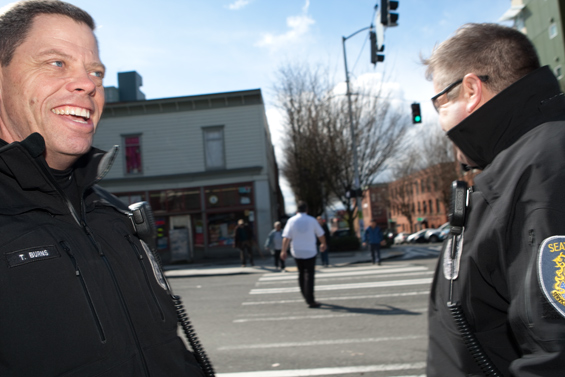Our photographer takes a walk with the Tom Burns and Bob Besaw, the Belltown beat cops responsible for compiling a controversial list of 75 people responsible for some 4,500 contacts with police. To learn more about the list, and how the public’s perception of SPD doesn’t always match the day-to-day reality, read Nina Shapiro’s cover story, “SPD’s Softer Side.”Published on March 28, 2012
Our photographer takes a walk with the Tom Burns and Bob Besaw,












